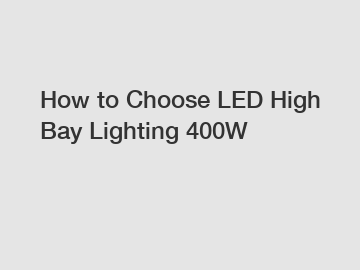Comprehensive Guide to Setting Up an LED Wall
https://www.sawinktech.com/news/led-video-walls-101-what-they-are-and-how-they-work.html
Introduction
In this guide, we provide a comprehensive overview of everything you need to know to set up an LED wall for your next event or installation project. From understanding the components required to the step-by-step installation process, we've got you covered.
Understanding LED Walls
LED walls, also known as LED video walls or LED displays, are a popular choice for creating immersive visual experiences in various settings, including concerts, trade shows, corporate events, and retail spaces. These displays consist of individual LED panels that work together to form a seamless and vibrant screen.
Components Needed
To set up an LED wall, you'll need the following components:
1. LED Panels
LED panels are the building blocks of an LED wall. These panels come in various sizes, resolutions, and configurations to suit different needs. When choosing LED panels, consider factors such as pixel pitch, brightness, and viewing distance.
2. Mounting Hardware
Mounting hardware, including brackets, rigging bars, and trusses, is essential for securely installing the LED panels. Ensure that the mounting hardware is compatible with the weight and size of the panels.
3. Video Processor
A video processor is necessary for processing and distributing video signals to the LED panels. It allows you to control the content displayed on the LED wall and manage multiple input sources seamlessly.
4. Cabling and Power Distribution
High-quality cabling and power distribution solutions are crucial for ensuring reliable performance and safety. Use appropriate cables and power distribution units to connect the LED panels, video processor, and other components.
5. Control System
See also:T8 Lighting Fixtures vs. LED: Which is Better?
Waterproof Down Light vs Regular Down Light: A Comparison
How to Choose t8 Recessed Louver Light
7 Ways to Brighten Your Home with Window Sill Light
Revolutionizing Modern Home Decor: Louver Lighting?
What are the benefits of T8 louver light fixtures?
Ultimate Guide to Maximizing Natural Light in Your Windows
A control system, such as a computer or dedicated controller, is needed to operate the LED wall and adjust its settings. Choose a control system that offers user-friendly software and robust functionality.
Installation Process
Now, let's walk through the step-by-step installation process for setting up an LED wall:
1. Prepare the Mounting Surface
Ensure that the mounting surface is clean, flat, and capable of supporting the weight of the LED panels and mounting hardware. If necessary, reinforce the mounting surface to provide additional stability.
2. Install the Mounting Hardware
Attach the mounting hardware to the mounting surface according to the manufacturer's instructions. Use appropriate fasteners and ensure that the hardware is securely anchored.
3. Mount the LED Panels
Carefully mount the LED panels onto the mounting hardware, ensuring that they are aligned correctly and securely fastened. Take care to avoid damaging the panels during installation.
4. Connect the Panels
Connect the LED panels using the provided cables, ensuring that each panel is properly linked to the video processor and power source. Test the connections to ensure that all panels are functioning correctly.
5. Configure the Video Processor
Set up the video processor according to the manufacturer's instructions, adjusting the settings as needed to optimize the display quality and performance. Test the video processor with different input sources to ensure compatibility.
6. Test and Calibrate
Once the LED wall is fully installed, conduct thorough testing and calibration to ensure that it meets your requirements and specifications. Make any necessary adjustments to achieve the desired brightness, color accuracy, and image clarity.
Conclusion
Setting up an LED wall requires careful planning, proper equipment, and precise installation techniques. By following the steps outlined in this guide, you can create stunning visual displays that captivate your audience and elevate your events to the next level. Whether you're hosting a concert, conference, or product launch, an LED wall offers endless possibilities for creativity and engagement.
The Advantages of Installing t8 Lighting Fixtures: A Comprehensive Guide
Exploring the Many Types of LED Strip Lights
Top Trends from the San Francisco MDLSF
What are the advantages of LED light fixtures?
Are Ceiling Lights for Stairs Overrated?
What are the Advantages of Using Recessed Lights?
Louver Light Fixtures: Are They the Future?
- Previous: None
- Next: None







